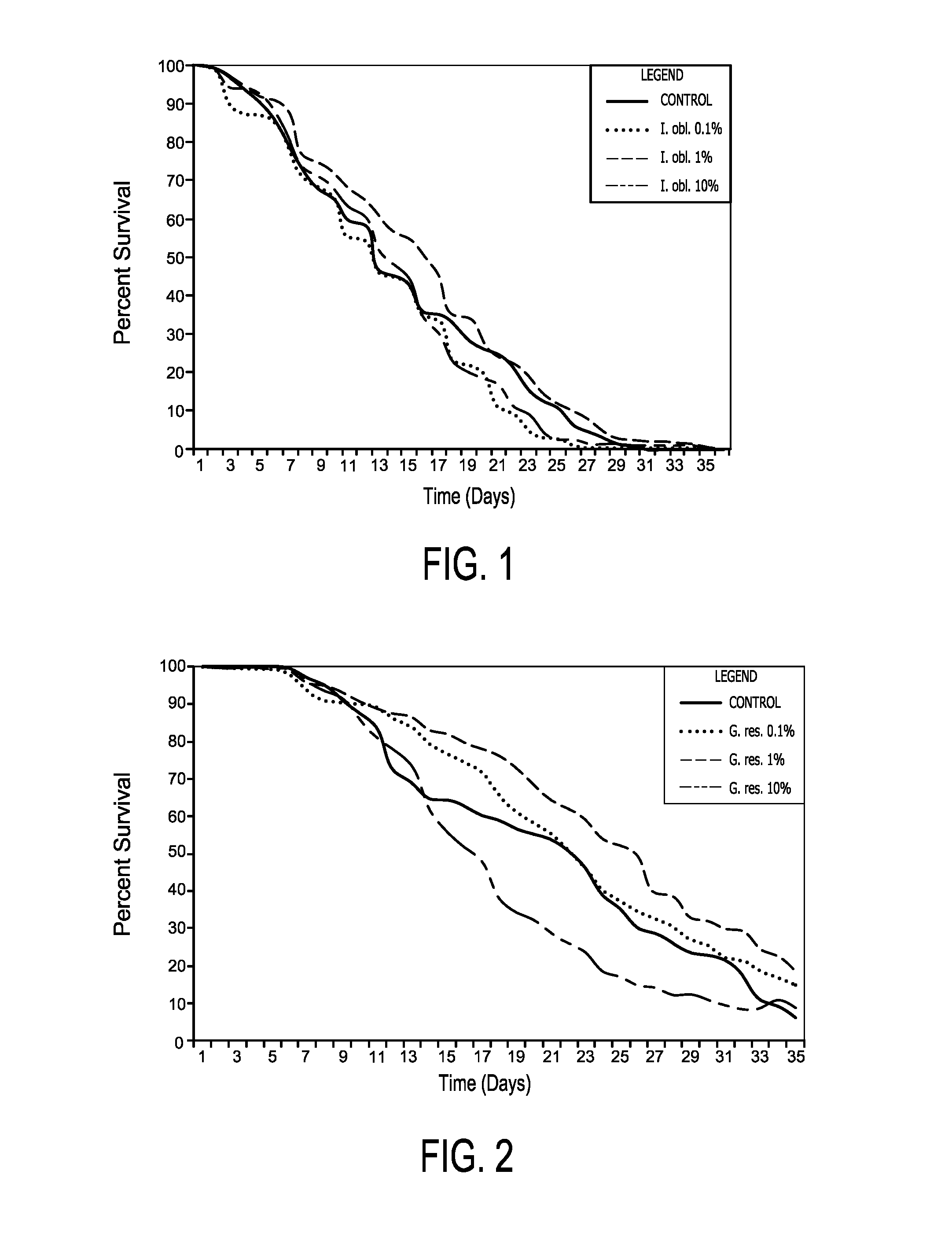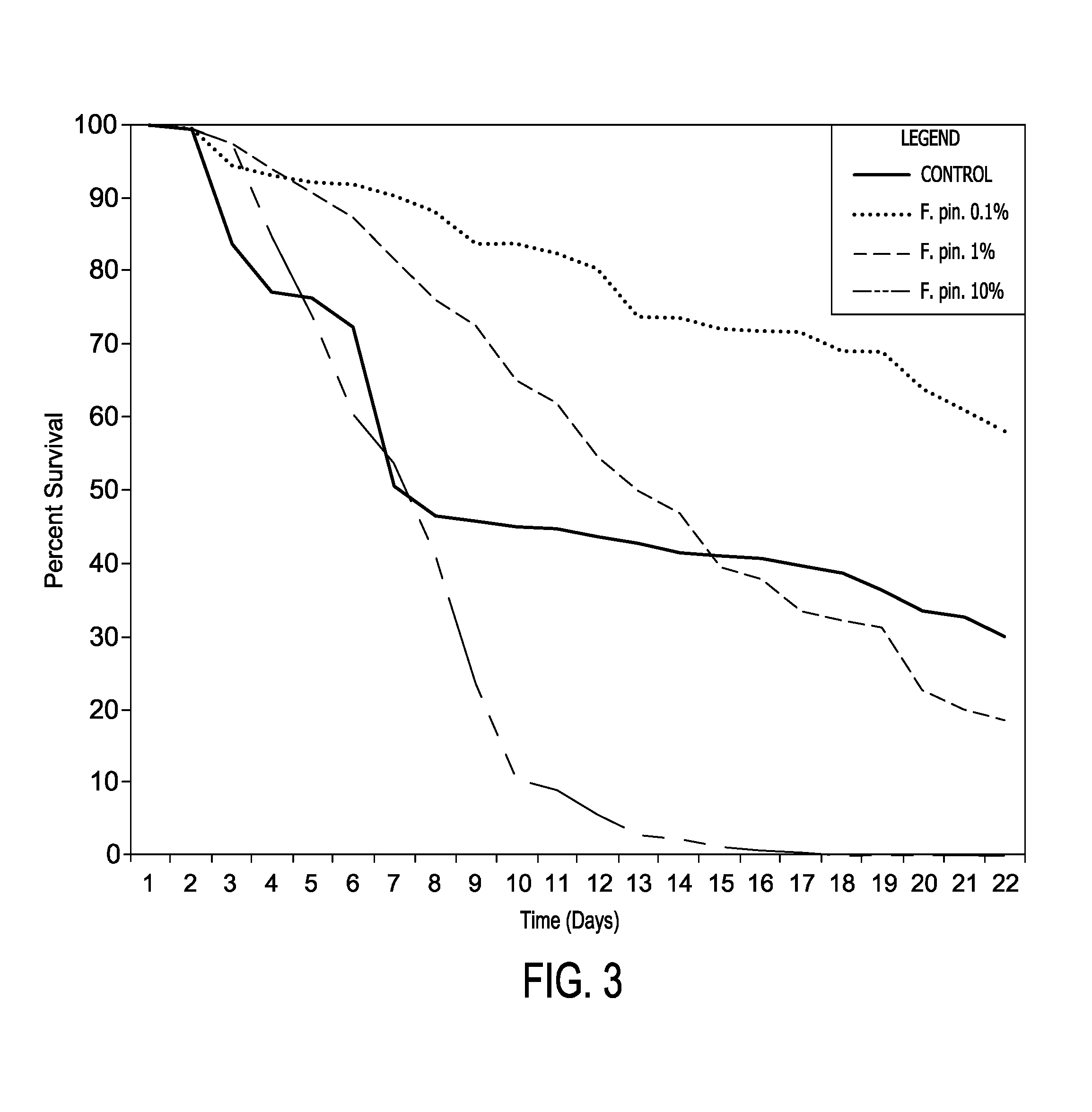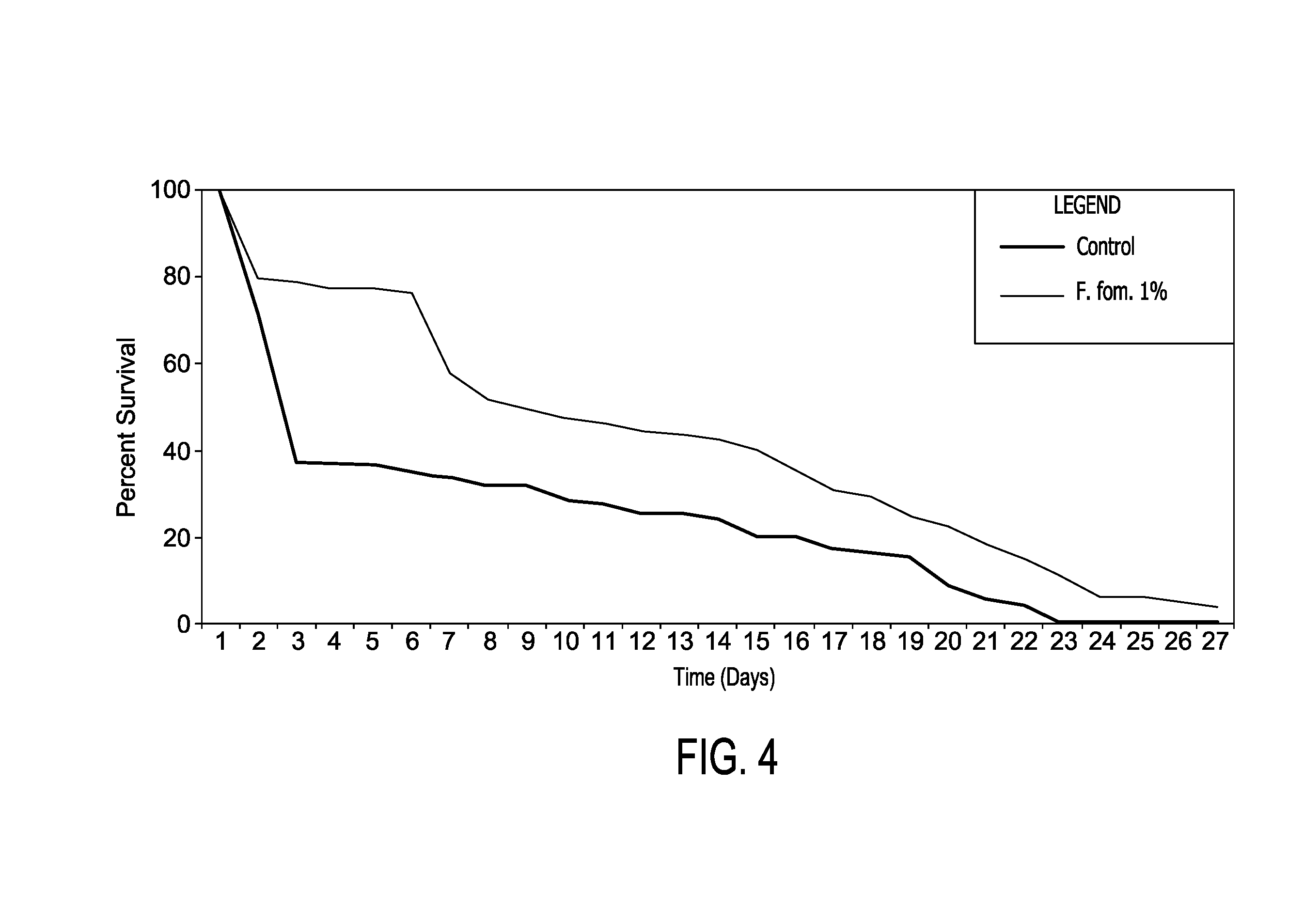Integrative fungal solutions for protecting bees and overcoming colony collapse disorder (CCD)
a technology of colony collapse disorder and fungal solutions, which is applied in the direction of biocide, plant/algae/fungi/lichens, biosol delivery, etc., can solve the problems of ccd, huge threat to food security worldwide, and the loss of bees we are experiencing now is unprecedented, so as to prevent or reduce ccd, antiviral and longevity enhancement
- Summary
- Abstract
- Description
- Claims
- Application Information
AI Technical Summary
Benefits of technology
Problems solved by technology
Method used
Image
Examples
example 1
[0147]Fomes fomentarius, Fomitopsis officinalis, Fomitopsis pinlcola, Ganoderma resinaceum, Inonotus obliquus, Piptoporus betulinus, Trametes versicolor, Schizophyllum commune and other mushroom species are cultured utilizing any known means for inoculating and means for cultivating medicinal mushroom mycelium or means for growing mycelium on rice, barley, flaxseeds or other grains, agricultural debris, or forest products such as sawdust or wood chips (for a list of substrates and a discussion of inoculating and cultivating mushroom mycelium, See Stamets, Growing Gourmet and Medicinal Mushrooms, 1993, Ten Speed Press, Berkeley, Ca. and Stamets & Chilton, The Mushroom Cultivator, Agarikon Press, Olympia, Wash.). Liquid inoculation is preferred for grain substrates, although inoculation with colonized agar may be utilized, and inoculation with colonized grain is preferred for sawdust or wood chip substrates. When the mycelium reaches a dense mass of growth (preferably after 20 but bef...
example 2
[0152]The medicinal mushroom mycelium is grown utilizing liquid culture techniques. Whereas growing on rice might have 30-40% conversion of rice to mycelium, liquid vat culture may have essentially complete conversion with >3× more mycelium per unit mass. Hence the liquid vat culture of mycelium and its extracellular metabolites will be easier to utilize in the development of this invention as the process of using vat culture eliminates the need to remove non-metabolized substrate ingredients. Any means for inoculating and cultivating mushroom mycelia via liquid culture may be utilized.
example 3
[0153]Mycelial extracts can be made in many ways. One preferred method for making the mycelial extract is to grow mycelium on a mixture containing equal volumes of sterilized or fermented grain (barley, flaxseed, rice, oats, millet, wheat, rye, corn, seeds, including nuts, sawdust or wood chips (Douglas fir, pines, oaks, birches, alders, aspens, cottonwoods, olives, Prunus trees)), that has been incubated for more than 4 weeks but less than 20 weeks, and then immerse this myceliated mass into a an equal volume of a 50:50 water-ethanol solution, adding the ethanol first. Allow to sit at room temperature for two weeks, and then drain the liquid and press to expel the liquid extract contained within the mycomass. Over several days, a precipitate will fall out of the hydroethanolic solution. The hydroethanolic supernatant is drawn off above the pasty precipitate. After several more weeks, or by using a centrifuge, the precipitate further concentrates into a semisolid state. The supernat...
PUM
| Property | Measurement | Unit |
|---|---|---|
| Fraction | aaaaa | aaaaa |
| Fraction | aaaaa | aaaaa |
| Fraction | aaaaa | aaaaa |
Abstract
Description
Claims
Application Information
 Login to View More
Login to View More - R&D
- Intellectual Property
- Life Sciences
- Materials
- Tech Scout
- Unparalleled Data Quality
- Higher Quality Content
- 60% Fewer Hallucinations
Browse by: Latest US Patents, China's latest patents, Technical Efficacy Thesaurus, Application Domain, Technology Topic, Popular Technical Reports.
© 2025 PatSnap. All rights reserved.Legal|Privacy policy|Modern Slavery Act Transparency Statement|Sitemap|About US| Contact US: help@patsnap.com



